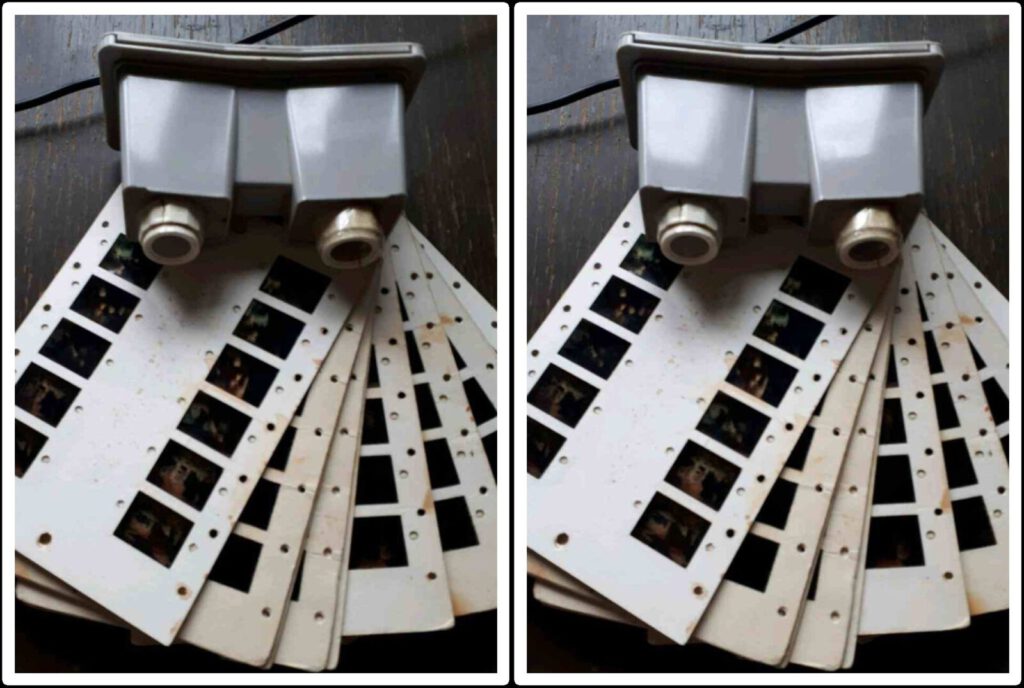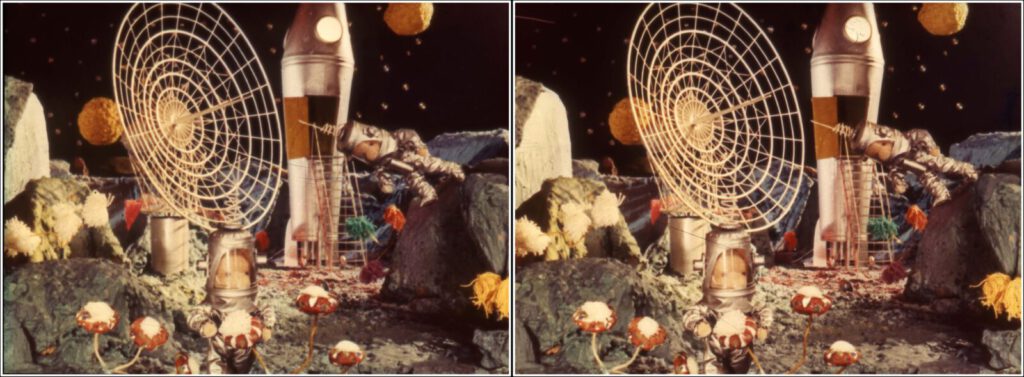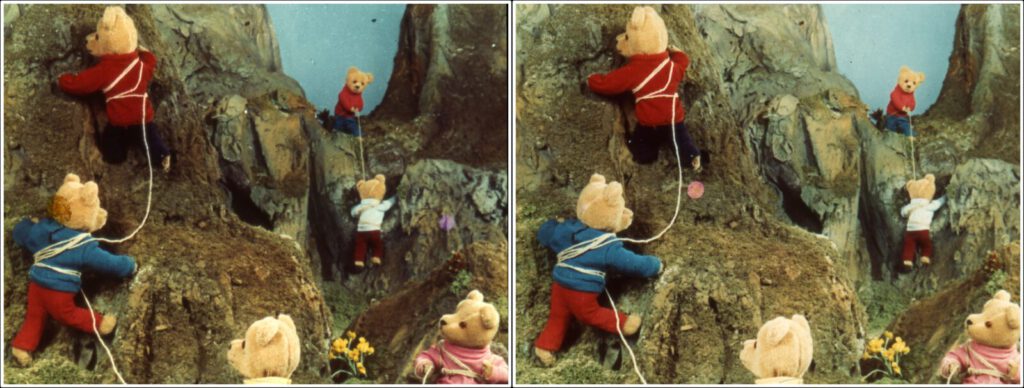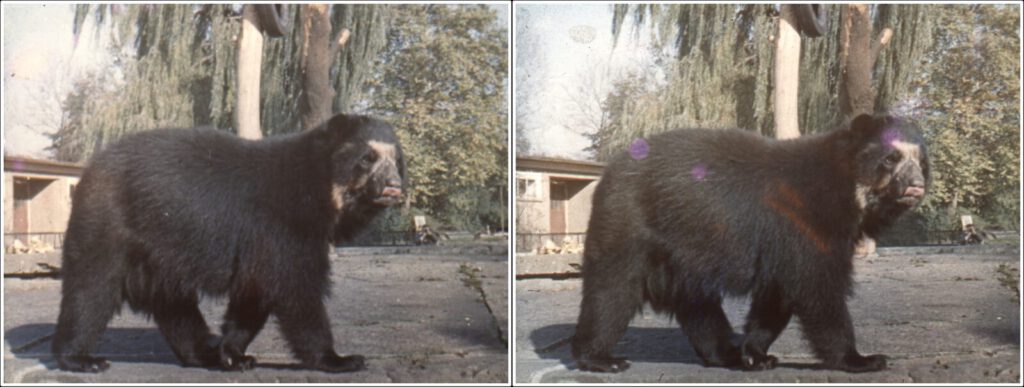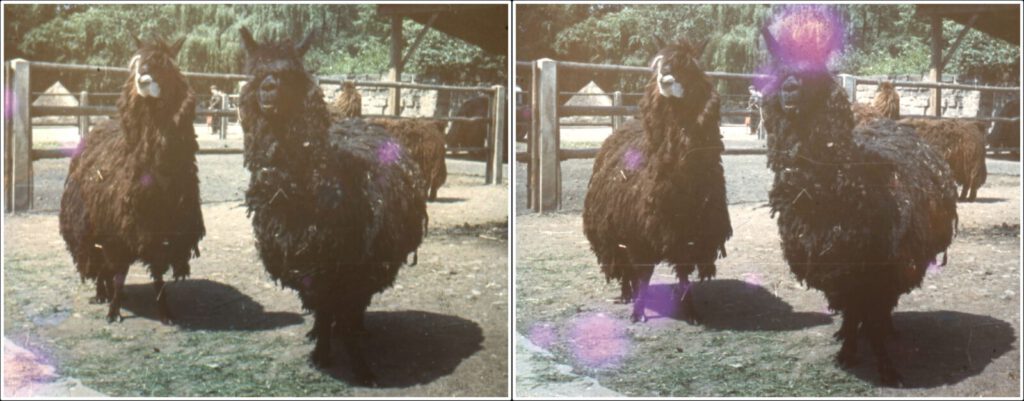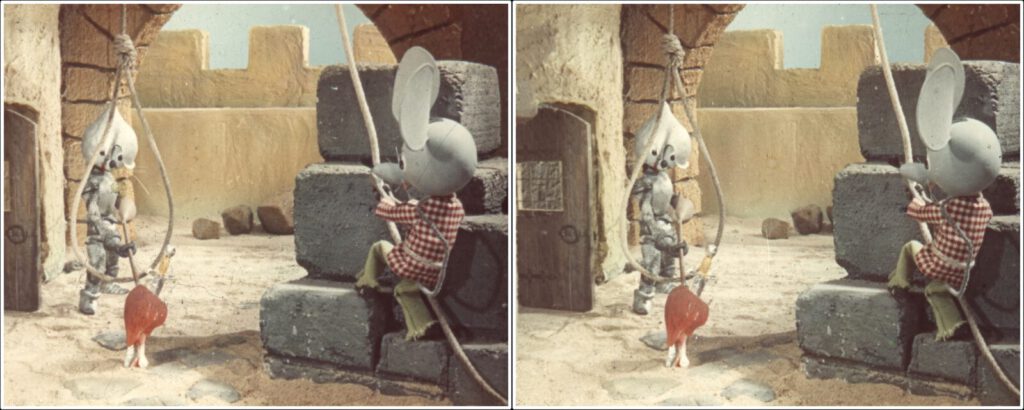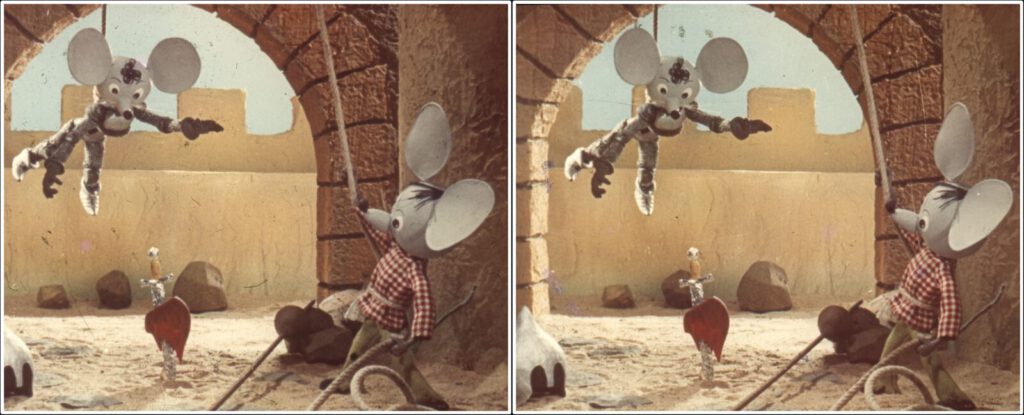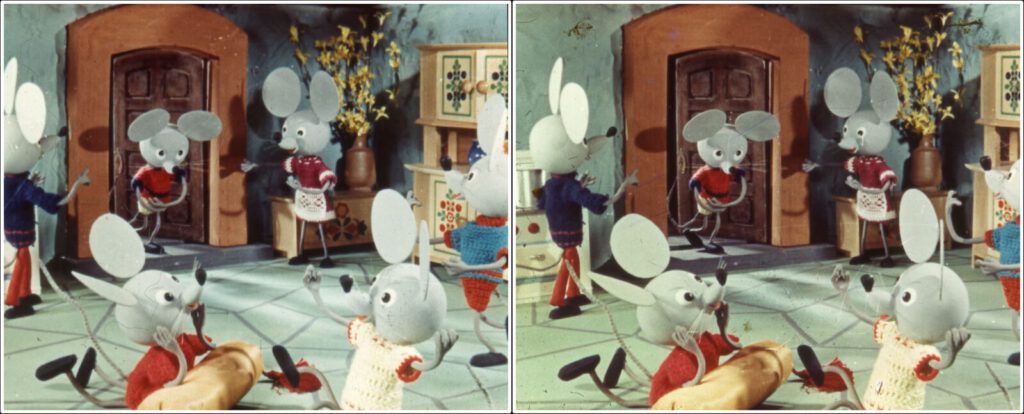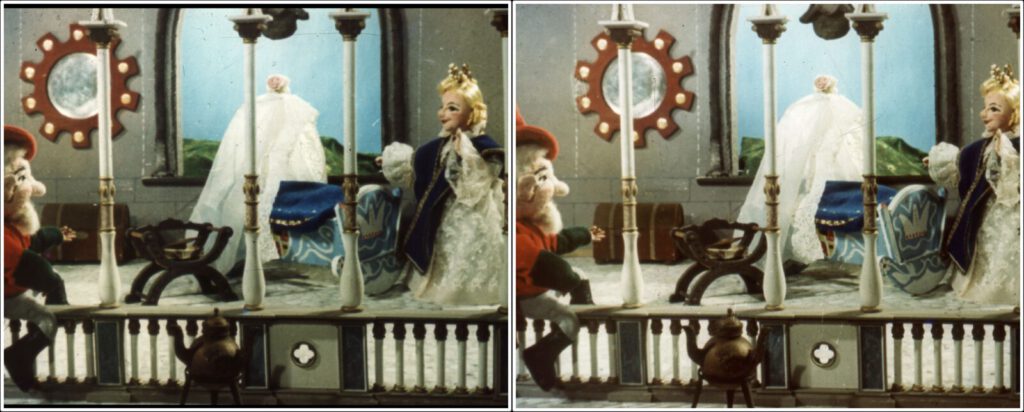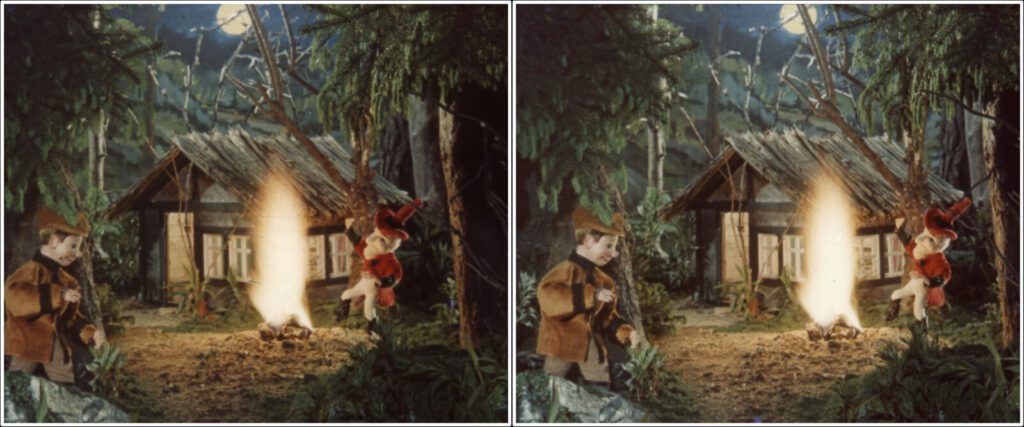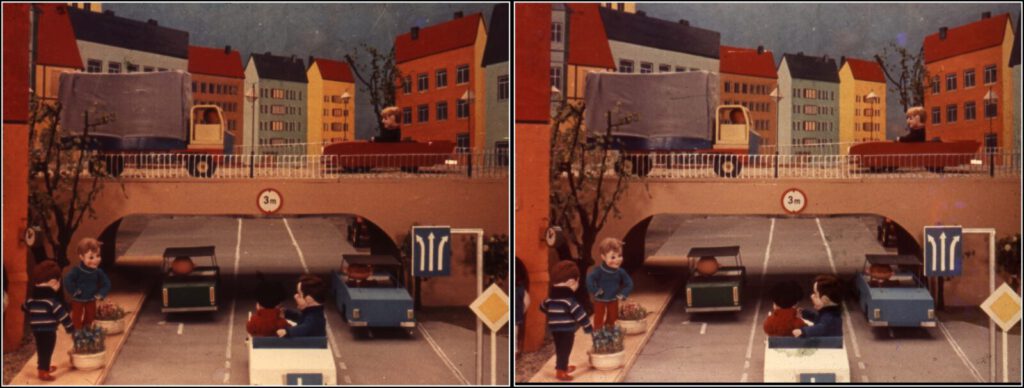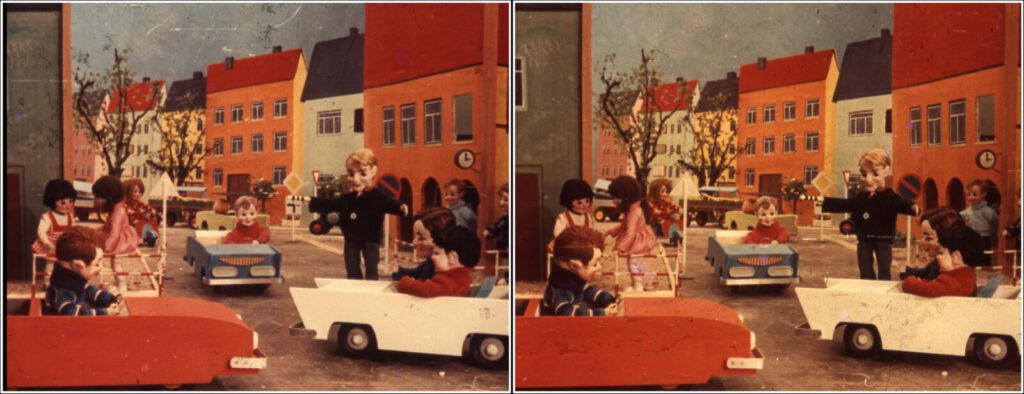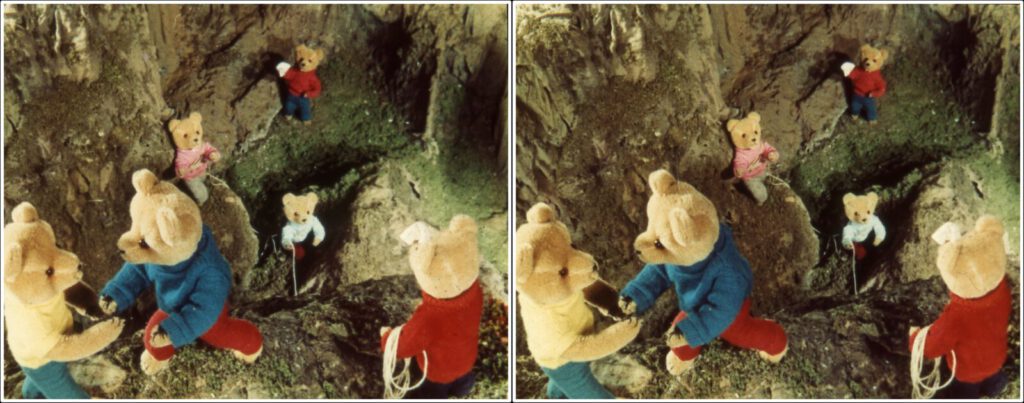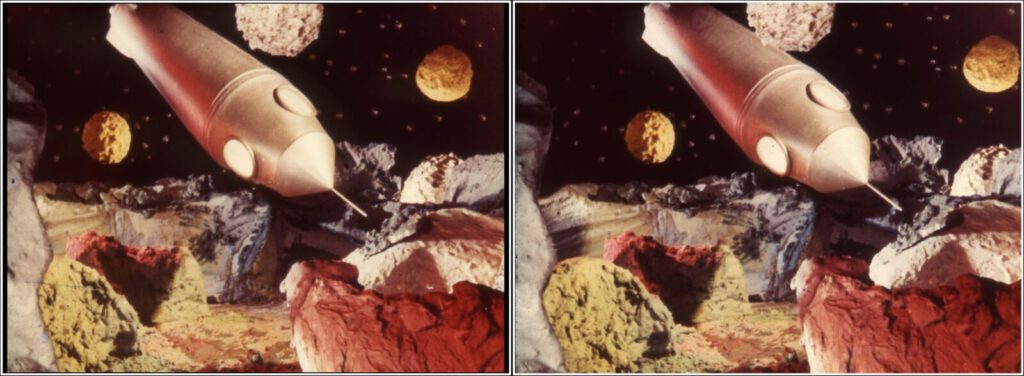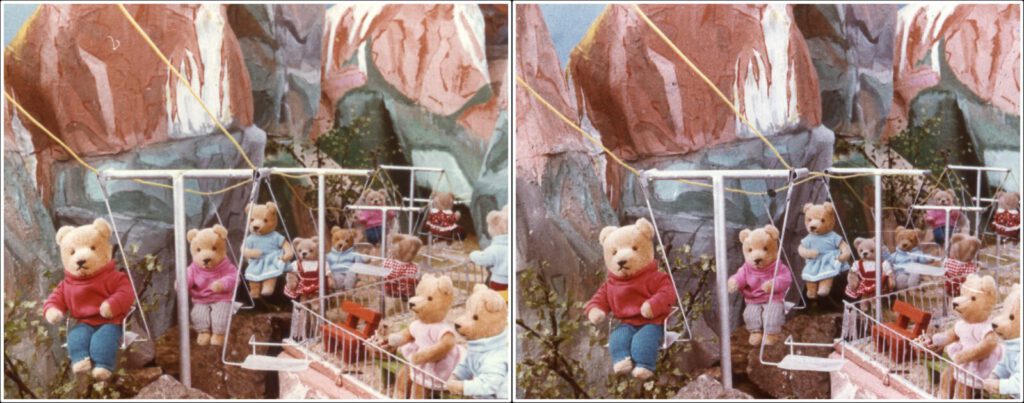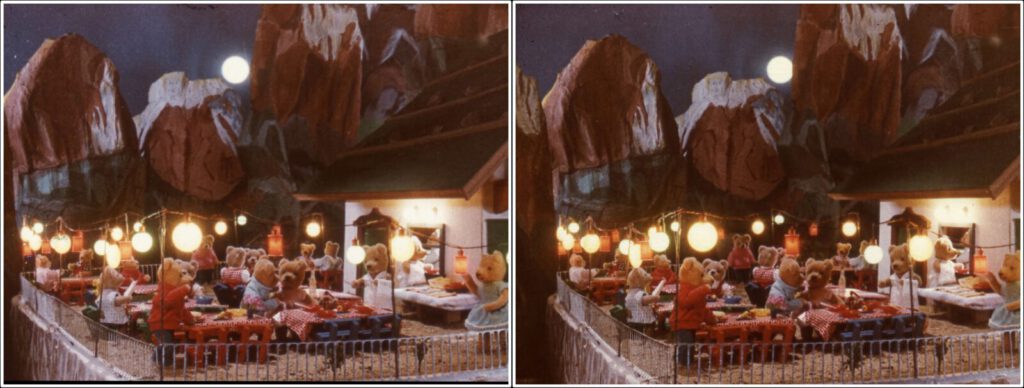My Magic Cards
written for the stereosite by Katya Neklyudova, Canada
What kind of entertainment would you have as a Soviet kid growing up in the 1980s? A couple of dolls, clothes, and rags for the dolls’ dresses; metallic constructor sets, the vinyl recordings of children’s stories; some cassettes with popular Russian songs, and a bunch of filmstrips (a 35 mm film with still images and captions to be projected on a wall – no movement or sound!). These things were in almost everyone’s possession – at least, that’s how I remember my friend’s toys. However, I had something very special – a set of stereo cards, along with a simple stereoscope that looked like binoculars.
Of course, back then I knew nothing about stereoscopy, as well as the story behind those slides, other than the fact that they were produced in East Germany. Each card featured six stereo pairs, and to view them, you had to slide it into a viewer, and go from bottom to top – from the beginning to the end of a particular story. In my early years I had only two cards. However later my little collection grew, and eventually I ended up having 14 sets of stereo slide cards. Many of them were Brothers Grimm tales (Snow White, Rumpelstiltskin, Hansel and Gretel, Little Red Riding Hood, etc.); I also had a series featuring Teddy Bears and their adventures – how they go to school, hike, exercise, climb mountains, or even go to space! Out of the whole collection, I loved the Teddies slides most of all, and in a way, they influenced my own tastes and likes. Space Teddies made me fall in love with the sci-fi stories; the card showing them climbing mountains made me dream about the distant places I have never seen. And in general, these cards broadened my imagination. We all know that many chidren created their own imaginary worlds. Thanks to these stereo images, mine were almost tangible.
For many years, these cards remained my only exposure to stereoscopy. I had no idea that it existed beyond this format. Of course, after I started taking my own stereos, I realized that these slides were popular around the world, as a part of more global process. I learned that people from outside of the Soviet Union (and the Eastern Bloc countries) are rarely aware of these East German stereo slides.
In the rest of the world everyone knows the View-Master Reels. After doing some research on my cards, I found out that my stereo viewer, named Stereomat, was produced in Kamenz (East Germany) in the 1970s. Organized into thematic series, each of the cards had a code marking a certain subject (for example, TS ‘Teddie Serie’ for Teddy Bears stereos, ZS ‘Zoo Serie’ for the stereo photos of animals, MS ‘Märchen Serie’ for the fairy tales, etc.).
According to one of Russian collectors (https://cccp.livejournal.com/24777.html), TS and MS series circulated widely in the Soviet Union, while others were less well-known. My collection consisted almost entirely of these series, with the exception of one ZS card. This was actually one of the first cards I had ever had, with the stereo images of animals from the Berlin Zoo. You can see that these slides were viewed (and handled) by a little kid, and therefore, their quality is not the best.
Another card from my initial set featured a story of a naughty mouse, who, after stealing a piece of ham, is chased, and eventually captured by his buddy. This example demonstrates how elaborate these stereos were! Now, as a stereo enthusiast, I can see how well the sense of depth was used, and how interesting and original the settings of this story were.
Interestingly, when I got more stereo slides as a gift several years later, I found another card that evidently told the same story, only this time, the little thief manages to escape. However, his greediness is punished by an upset stomach, and the story culminates in more didactic ending.
The Brothers Grimm tales were extremely popular among Russian kids, and therefore, immediately recognizable. No wonder that this series was extensively represented in my personal collection! I would like to share a couple of stereo pairs from Rumpelstiltskin, the story of a miller’s daughter that became a queen, a vicious gnome whose name nobody can guess, and an evil deal.
I also have a card that does not really match any of the categories. It is about a day in the life of a driving school’s students and instructors, starting from the moment that they come to the class, to the moment when they pass their tests. My guess is that, since this card is from the MS series, it is probably based on a children’s story or an animation film. Unfortunately, I could not find the source of these slides.
Finally, here are my most favorite cards, featuring the adventures of Teddy Bears (the TS series). Again, I do not know if this series was written and staged specifically for the stereo slides, or the creators based it on some existing stories. I think that these are breathtaking examples of how masterful the Stereomat team was. From the carefully designed settings to the use of depth, from the cute and lovable teddies to the amazing lighting. Back then, when I was a kid, I firmly believed that these beautiful scenes indeed existed somewhere across the sea, and my dream was to climb these mountains, and maybe even go into space one day.
Katya Neklyudova (Hamilton, Canada)
I became a stereo enthusiast after I read Queen in 3D written by Brian May. Fascinated with the idea of taking stereo photos, I decided to give it a try! It has been more than three years now, and I can say that I have never had such a rewarding hobby in my life. I started noticing more beauty that surrounded me, I met a lot of wonderful and inspiring people on Instagram, and I became an essayist and a podcaster. All thanks to this amazing book! I only use my smartphone to take my stereo pictures — I love the fact that it can be done anywhere, at any moment of time.
Instagram-profile: katya.3d

